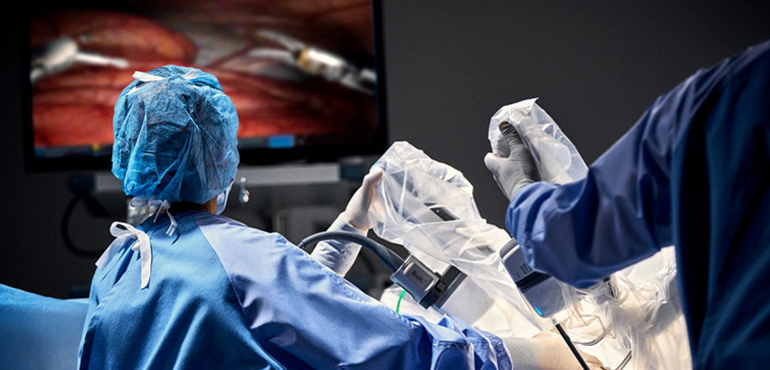
Robotic Gallbladder Surgery
Gallstones are stones or crystalline masses that form within the gallbladder and may vary in size and number. While gallstones symptoms can cause severe abdominal pain, bloating, and discomfort, asymptomatic gallstones can also cause severe complications, as they can slip down and block the bile duct.
When is gallbladder surgery required?
- Cholelithiasis: Presence of gallstones
- Cholestasis: A Condition in which the flow of bile from the liver stops or slows.
- Cholecystitis: Inflammation of the gallbladder
- Cholangitis: Inflammation of the bile ducts
- Biliary Colic: When a gallstone moves from the body of the gallbladder into its neck (cystic duct), leading to obstruction
Gallbladder removal is the only cure for gallstones. Laparoscopic cholecystectomy is a well-established procedure for gallbladder removal. With the next generation the same procedure can be performed with higher accuracy, precision, and safety with all the benefits of laparoscopic procedures intact.
During robotic surgery with a next-generation robotic system, Versius- the surgeon sits on an open console next to the patient wearing 3D glasses and operates using a 3D high-definition (HD) view on the console screen. The hand controls are manoeuvred by the surgeon, that moves the robotic arms with attached surgical instruments. The Versius system is a next-generation robotic system backed by artificial intelligence and machine learning. It is designed for surgical excellence.
How Robotic-Assisted Surgeries are Performed
Through robotic-assisted visualization, dexterity, precision and control, a surgeon can perform a wide array of procedures through small 1–2 cm incisions. During an operation, the surgeon sits at a console in the surgical suite and directs the robotic arms to perform the surgery. The robot seamlessly and directly translates the surgeon’s natural hand, wrist and finger movements from controls at the console to the surgical instruments inside the patient.
Enabling Surgeons with Greater range of motion and precision than with hand-manipulated, minimally invasive procedures.
A magnified, high definition three-dimensional view when operating.
Instruments that become an extension of the doctor’s wrists, hands and fingers to move the tiny surgical instruments in a delicate, precise manner.
Benefits of Robotic Surgery
- Less post-operative pain
- Reduced trauma to the body
- Less scarring
- Shorter hospital stays
- Reduced blood loss and need for transfusions
- Quicker recovery and return to normal activities